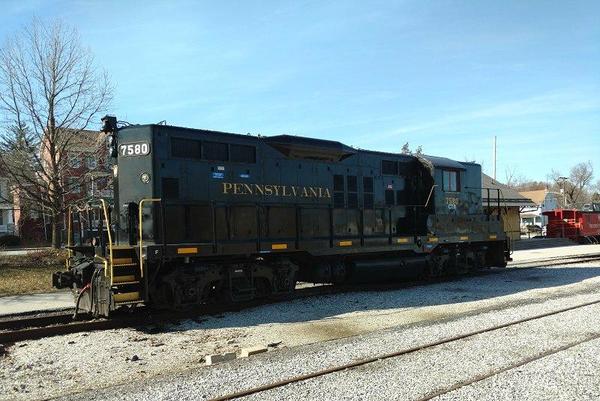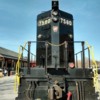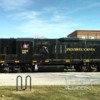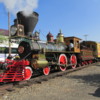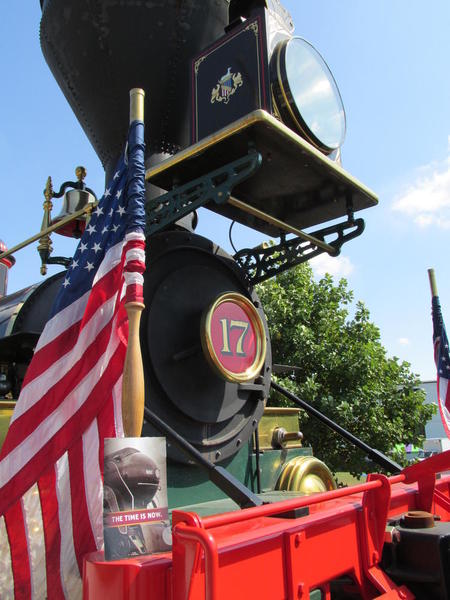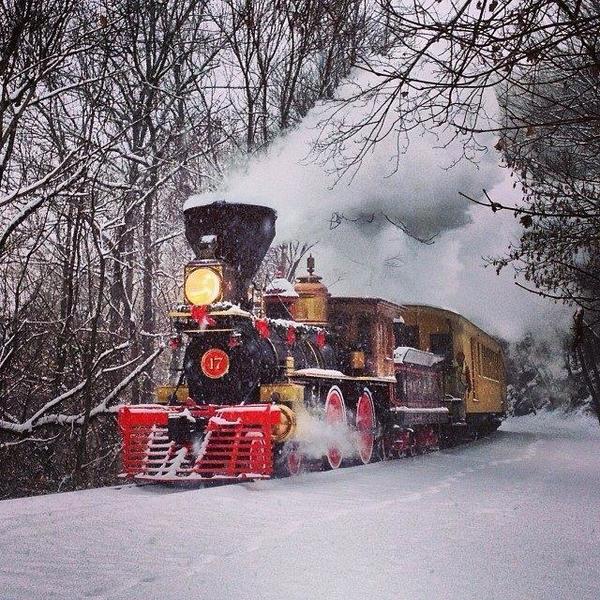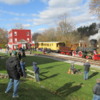While their steam locomotive is down for inspection and PM, this ex PRR GP9 will haul the passengers over the scenic route. Built for the PRR in 1957 as # 7128, this unit survived thru CR and has been rebuilt numerous times over its life and is now classified as a GP10 (I think). Previously serving on the Colebrookdale RR, this classic will be running until May when the steam is scheduled to return.
Replies sorted oldest to newest
Almost all GP9s are GP10s by now. A GP10 is just a GP9 with 645 power assemblies (cylinders) installed on the original 567 engine block.
These large diesel engines are designed in such a way that individual cylinders bolt up to the engine block. The cylinders are not cast into the block itself like an automobile engine. Each cylinder is called a "Power Assembly."
GP9s were originally built with the EMD 567C engine. The number "567" signified the number of cubic inches per cylinder in the engine. The 16-cylinder 567 engine in the GP9 had a total of 9,072 cubic inches.
When EMD came out with the 645 engine (645 cubic inches per cylinder) they were backwards compatible with the 567C block. The 645 power assemblies would bolt right up to the 567 block. As the older 567 power assemblies wore out, operators typically replaced them with 645 power assemblies, thus changing a GP9 to a GP10.
A 16-cylinder 645 engine has 10,320 cubic inches of displacement. With the additional displacement, horsepower went up slightly, and most GP10s were rated at 1,800 hp.
As a real PRR locomotive, I think this GEEP needs a restoration back to it's original condition. I base that opinion on the fact that she still sports her high nose.
Man, I bet the Civil War re-enactors who didn't do their homework are going to go nuts showing up there in their wools, and then find a Geep is at the head end! ![]()
I'm not certain if this photo helps, but these black objects on the pallet are power assemblies, as Rich explained.
Attachments
How many locomotives are in the Steamtown backshop in various states of teardown? Six? And the two Canadian steamers out of service in the roundhouse? Seems like they are going for the unofficial records of most locomotives under simultaneous repair at one facility for a museum. Hopefully, they're taking advantage of this fact during the shop tours to educate the visitors.
What does "Steamtown" have to do with "Steam Into History" other than they are both in Pennsylvania?![]()
Tim O'Malley posted:
Well, those "connecting rods" are slightly bigger than the ones in my Chevrolet 350!!! ![]()
The scale or size of train parts, relative to passenger automobile parts, never ceases to amaze me.
2101 & 614 posted:What does "Steamtown" have to do with "Steam Into History" other than they are both in Pennsylvania?
The above picture of the EMD power assemblies is was taken at Steamtown.
Those "Civil War" coaches with their steel flatcar underframes must look right at home behind a GP10! I get a real laugh at the big fat knuckle coupler above the "woodburner's" pointy cowcatcher. As Henry Ford said, "ninety percent of history is bunk!"
Kent Loudon posted:Those "Civil War" coaches with their steel flatcar underframes must look right at home behind a GP10! I get a real laugh at the big fat knuckle coupler above the "woodburner's" pointy cowcatcher. As Henry Ford said, "ninety percent of history is bunk!"
Well, this:
is certainly better than THIS:
Rusty
Attachments
Berkshire President posted:Tim O'Malley posted:Well, those "connecting rods" are slightly bigger than the ones in my Chevrolet 350!!!
The scale or size of train parts, relative to passenger automobile parts, never ceases to amaze me.
Allow me to begin the debate on component sizes ![]() (...thread hijack over: as you were)
(...thread hijack over: as you were)
Attachments
The diesel engine design with higher compression ratios mandates heavier parts being used especially rods and bearings. The EMD power assemblies have always been a big advantage on the EMD engines. If you read about the guy reproing Lincoln's funeral train car, you will find a modern steel frame under everything because of safety standards required when hauling people. Part of today's world. Look at old photos of wooden passenger cars involved in a wreck-kindling wood.






